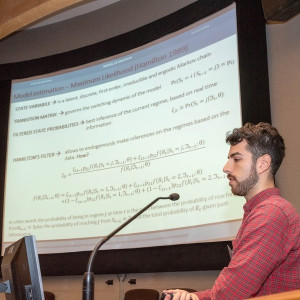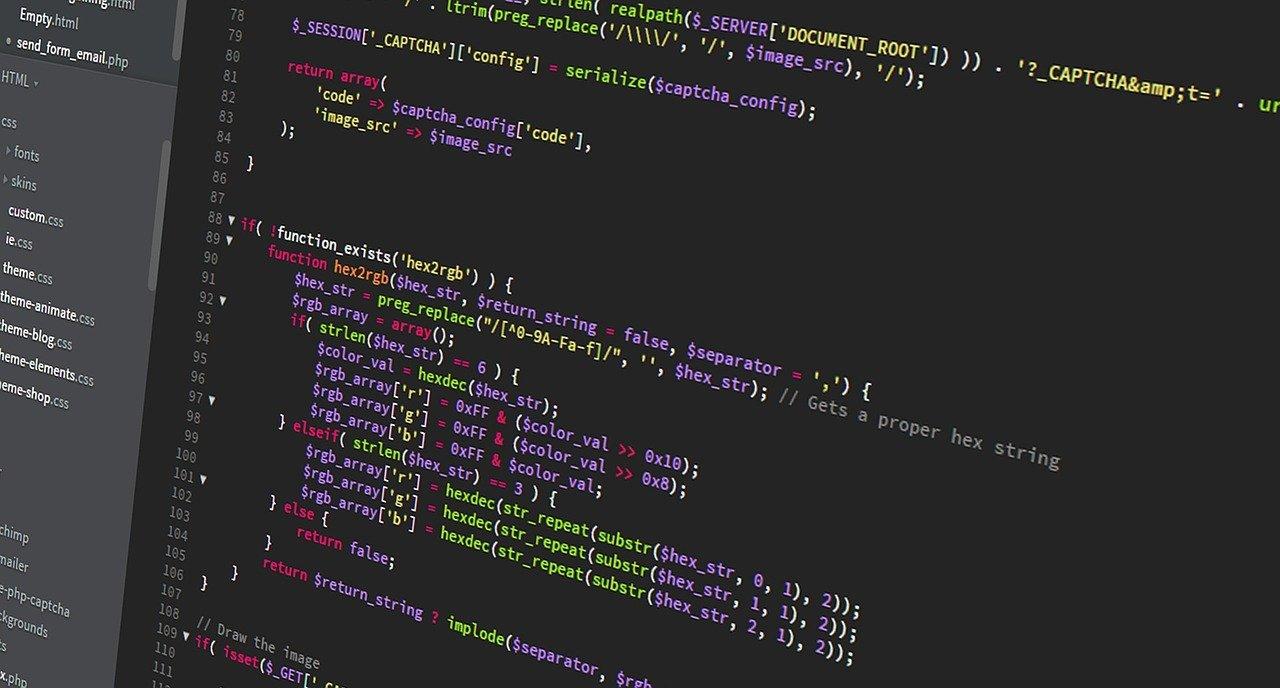The inner workings of computers are definitely not for everyone. Moreover, not everyone even feels comfortable with computers and the internet in particular. Of course, not everyone is born with the internet as a given - after all, accessibility to computers is an issue that will dominate this century.
However, many people the world over are starting learning programming languages and building websites, applications or software. More and more courses are being offered to learn the basics of programming. So if you already know what you're doing, why not take up teaching?

What Studies Should I Take Up to Become a Teacher in the Field?
Training in this tough subject can and will take time. To be a teacher or trainer of programming is first and foremost to be a programmer. Schools do not specialise in courses to become programming teachers. Generally speaking, trainers go through a programming training course before teaching the subject. Some also embark on a career as a programmer before offering courses. This of course depends on one's opportunities.
To train in programming, one of the first reflexes is to study in a computer science school. Public or private, these schools allow you to train - from bachelors all the way to doctorates - in the field of computer programming, programming and engineering in general. You can also obtain different certificates and awards in the field.
These schools are ideal for initial training and comprehensive courses over several years, as well as internships for work experience. As soon as you start your studies, it is possible to offer private programming courses to young students if your level allows it.
You can also train in programming languages (HTML, Python, C+, Java, etc.) via short courses. These schools offer online distance learning or intensive training courses that allow you to acquire the basics to become a programmer. These courses do not allow you to obtain the same level as 5 years of study, of course, but they can be effective in getting a foot in the door of programming and thus continue to progress on your own.
It is also possible to learn to program on your own and then teach it. Indeed, you can help many programming enthusiasts in their learning. The advice of a self-taught person can really help and inspire students.
Where to Teach as a Programmer?
There are several jobs for programming trainers. For example, you can teach programming within a company. The programming trainer then trains the company's employees to improve their IT skills.
They may be novices who want to learn the basics, or they may be experienced programmers who need to improve certain skills that you can teach. These trainers are often recruited after several years of experience as a programmer.
Why not teach at a distance? You can even be recruited directly from within the company. Companies may also use external service providers. These are freelance trainers who offer their services to different companies for occasional or regular training.
You can also teach programming in a computer science track in a school. Recruitment depends on each school, so you should contact the school you would like to teach at directly to find out what positions are available and how to apply.
Schools offering short and distance learning courses also offer lecturer positions. This can be an ideal way to find a training position without having to move.
In any case, when teaching in computer science or engineering school, you will have to follow the curriculum imposed by the school.

However, if you want to make your own programme, you have the option of becoming a private programming tutor. By giving private lessons, you will be able to organise your programme but also to choose your timetable more or less (depending on the timetable of the students) and work from where you want if you give lessons at a distance.
The Pros and Cons of Becoming a Programmer Trainer!
Many young people dream of becoming a teacher. Indeed, teaching brings a number of advantages, especially in the programming field.
First of all, the possibility of making a living from your passion. Not everyone has this opportunity and it would be a shame to miss out. You are passionate about programming and have many skills in this area? So why not use them and make a passion job?
More and more institutions are looking for computer science teachers. There is also a great demand from computer enthusiasts who want to learn to program in private lessons. You will easily find your place in the field. A trainer also continues to train throughout his or her life, as technology changes every day!
Becoming a programming teacher is also about constant learning. There will certainly come a time when you cannot answer a student's question. This happens to all teachers. Just say that you will do some research on your own before giving the answer. This will also help you to improve and continue learning.
Being a programming teacher can also bring a certain amount of freedom. If you choose to teach at a computer school, you may not be working full time. A schedule that may allow you to do other programming projects on the side.
As a tutor, there can sometimes be more freedom, especially if you decide to teach at a distance. It is then possible to live anywhere and still work. Lessons can be given at a distance via a webcam and screen sharing, a solution that is becoming increasingly popular.
Another important freedom is that you can design your own courses. If you are a freelance teacher, no one will tell you what to teach. Of course, you will have to discuss the programme with the main person involved: the student. However, this gives you a certain amount of freedom in the way you want to teach.
Being a teacher of computer programming has many advantages, but also some disadvantages. One of them is that you have to repeat yourself quite often, or you have to deal with all the tasks around the lessons that you don't think about beforehand. This can be answering students' e-mails, but also attending class councils in schools, correcting exercises, or preparing lessons. This last task is very time-consuming.
Computer courses can also be staggered, as with evening classes. In this case, you will have to adapt to this less "traditional" schedule.
How to Give Good Courses as a Programming Trainer?
Being a teacher cannot be improvised and it takes time to become the best teacher possible. With experience, there is no need to put pressure on yourself to be perfect. However, there are a few tips and tricks that can help you get started. Giving good lessons is a mixture of theoretical knowledge and practical exercises.
First, ask yourself if you are really driven by what you do? Are you passionate about programming? Then your passion will come through in your words and therefore in your lessons. This may seem obvious, but there is nothing worse than a teacher who doesn't believe in what he or she is saying or who is tired of teaching. So not only do you have to be passionate about programming, but you also have to love to transmit and teach.
To enrich your programming courses, do not hesitate to integrate practical projects. Theoretical courses are important, but students will be more interested in the knowledge presented in the course is put into practice in a concrete project such as the programming of an application or a website. These practical exercises can also bring originality to your lessons and wake up your students a bit.
Remember also to keep learning. As explained earlier, it is important to keep learning. The digital world is constantly changing. A programming teacher needs to keep up to date with the latest trends and techniques in programming. This does not mean knowing everything, but just being interested and interacting with your students.
It is also important to take the time to prepare your lessons well in advance. This step should not be rushed. The preparation work often takes as much time, if not more, than the course itself. However, it allows you to present a coherent sequence of lessons for the students and to know where you are going.

In order to build the framework of your course, do not hesitate to ask your students for their opinion. Knowing their expectations will help you to take the right path in the construction of the course. It also allows you to make them actors in their programming courses.
Also, consider creating exchanges during the lesson. These exchanges allow students to express their doubts or questions about a specific point in the lesson or about a general aspect of the programming. These exchanges help to create a bond of trust between teacher and student.
You now have all the keys to becoming a programming teacher!
























